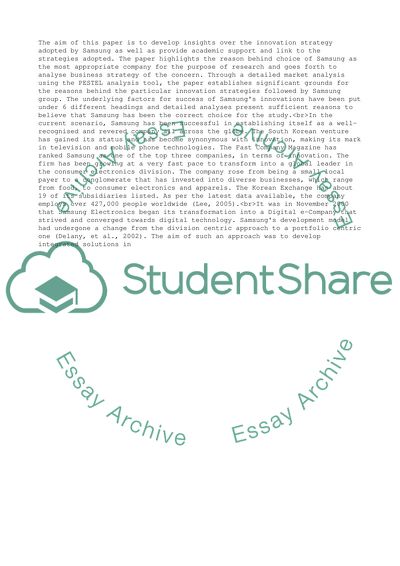Cite this document
(Managing Innovation, Creativity & Change. identify an organisation Essay, n.d.)
Managing Innovation, Creativity & Change. identify an organisation Essay. https://studentshare.org/management/1829500-managing-innovation-creativity-change-identify-an-organisation-that-you-consider-to-be-innovative-provide-a-brief-introduction-to-your-chosen-organisation-and-its-general-industry-context-and-then-justify-your-choice-in-the-light-of-key-innovation-m
Managing Innovation, Creativity & Change. identify an organisation Essay. https://studentshare.org/management/1829500-managing-innovation-creativity-change-identify-an-organisation-that-you-consider-to-be-innovative-provide-a-brief-introduction-to-your-chosen-organisation-and-its-general-industry-context-and-then-justify-your-choice-in-the-light-of-key-innovation-m
(Managing Innovation, Creativity & Change. Identify an Organisation Essay)
Managing Innovation, Creativity & Change. Identify an Organisation Essay. https://studentshare.org/management/1829500-managing-innovation-creativity-change-identify-an-organisation-that-you-consider-to-be-innovative-provide-a-brief-introduction-to-your-chosen-organisation-and-its-general-industry-context-and-then-justify-your-choice-in-the-light-of-key-innovation-m.
Managing Innovation, Creativity & Change. Identify an Organisation Essay. https://studentshare.org/management/1829500-managing-innovation-creativity-change-identify-an-organisation-that-you-consider-to-be-innovative-provide-a-brief-introduction-to-your-chosen-organisation-and-its-general-industry-context-and-then-justify-your-choice-in-the-light-of-key-innovation-m.
“Managing Innovation, Creativity & Change. Identify an Organisation Essay”. https://studentshare.org/management/1829500-managing-innovation-creativity-change-identify-an-organisation-that-you-consider-to-be-innovative-provide-a-brief-introduction-to-your-chosen-organisation-and-its-general-industry-context-and-then-justify-your-choice-in-the-light-of-key-innovation-m.


